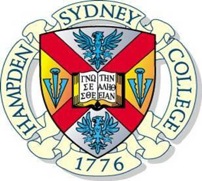Below is a summary of the abstract you submitted. Presenting author(s) is shown in bold.
If any changes need to be made, you can modify the abstract or change the authors.
You can also download a .docx version of this abstract.
If there are any problems, please email Dan at dar78@pitt.edu and he'll take care of them!
This abstract was last modified on April 20, 2015 at 11:49 a.m..

As part of the SEA-PHAGES curriculum at Hampden-Sydney College, a men's liberal arts college in central Virginia, the Molecular and Cellular Biology class isolated and characterized bacteriophages from the local environment using Bacillus thuringiensis as a host. Direct plating of one environmental sample yielded Archie14, a bacteriophage that appeared to show an especially strong lytic capacity. Archie14 shows strong homology to subcluster C1 Bacillus bacteriophages and is 162,099 basepairs long with 298 ORFs. Of particular interest in the genome of Archie14 is the presence of several bacterial ORFs that would seemingly be dispensable for viral replication. Several Bacillus ORFS, including dihydrofolate reductase, adenylate kinase, and thymidylate synthase, are found clustered together in Archie14, suggesting acquisition from Bacillus at some point during the evolutionary history of the phage but leaving in question if the acquisition benefits the ability of the virus to be replicated or is merely coincidental. Intriguingly, we also detected a sigF-like RNA polymerase sigma factor of greater similarity to Clostridium bacterial species than Bacillus. In considering the evolution of Archie14, this suggests that the virus may have passed through Clostridium hosts on its way to adaptation to its current status as a Bacillus bacteriophage. Current work is exploring the host range of Archie14 to follow up on which bacterial hosts can support its propagation.


